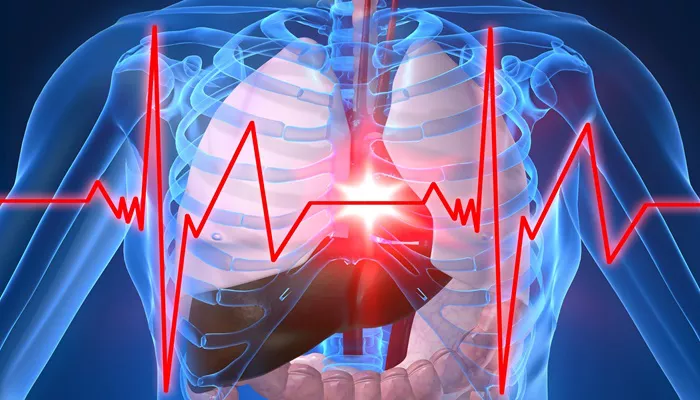In cardiovascular medicine, heart failure, heart attack, and cardiac arrest represent distinct and serious conditions. These terms are often mistakenly used interchangeably, yet each involves different pathophysiology, clinical presentations, prognostic implications, and treatment strategies. This article offers a detailed exploration of these cardiac conditions, aiming to educate patients, medical students, and health professionals on the vital differences that influence diagnosis, intervention, and long-term management.
What Is Heart Failure?
Heart failure is a chronic condition. It occurs when the heart cannot pump enough blood to meet the body’s needs. It may involve the left, right, or both sides of the heart.
Causes of Heart Failure
Common causes include:
- Coronary artery disease
- Hypertension
- Diabetes mellitus
- Valvular heart disease
- Cardiomyopathy
Symptoms of Heart Failure
Signs vary based on the affected side:
- Left-sided failure: dyspnea, fatigue, orthopnea
- Right-sided failure: edema, ascites, jugular vein distention
Types of Heart Failure
- Heart failure with reduced ejection fraction (HFrEF)
- Heart failure with preserved ejection fraction (HFpEF)
Diagnostic Tools
To confirm heart failure, clinicians may use:
- Echocardiogram
- BNP levels
- Chest X-ray
- Electrocardiogram (ECG)
Treatment Approaches
- ACE inhibitors, ARBs, beta-blockers
- Diuretics for fluid control
- Device therapy (ICD, CRT)
- Lifestyle changes: sodium restriction, weight monitoring
What Is a Heart Attack (Myocardial Infarction)?
A heart attack occurs when blood flow to the heart muscle is blocked, typically due to a clot in a coronary artery. This results in myocardial tissue damage or death.
Causes of Heart Attack
- Atherosclerosis
- Coronary artery spasm
- Coronary embolism
Symptoms of Heart Attack
Common signs include:
- Chest pain or pressure
- Radiating pain (arm, jaw, neck)
- Shortness of breath
- Diaphoresis, nausea
- Lightheadedness
Diagnostic Tools
- ECG changes (ST elevation, Q waves)
- Elevated troponins
- Coronary angiography
Immediate Treatments
- MONA protocol: Morphine, Oxygen, Nitrates, Aspirin
- PCI (angioplasty and stent placement)
- Thrombolytic therapy (in non-PCI-capable facilities)
Long-Term Management
- Dual antiplatelet therapy
- Statins, beta-blockers, ACE inhibitors
- Cardiac rehabilitation
What Is Cardiac Arrest?
Cardiac arrest is the sudden cessation of heart function. It is an electrical failure of the heart leading to abrupt loss of circulation and consciousness. Without intervention, death occurs within minutes.
Causes of Cardiac Arrest
- Ventricular fibrillation or tachycardia
- Severe myocardial infarction
- Electrolyte imbalances (e.g., hyperkalemia)
- Drug overdose or toxicity
- Commotio cordis (trauma-induced)
Symptoms of Cardiac Arrest
Onset is sudden:
- Collapse
- No pulse
- No breathing
- Unconsciousness
Immediate Response
- Call emergency services
- Begin CPR (Cardiopulmonary Resuscitation)
- Use an AED (Automated External Defibrillator) if available
Survival and Prognosis
Time is critical. Every minute without CPR reduces survival by 7-10%. Prompt defibrillation is the key determinant.
Key Differences Between the Three Conditions
Mechanism
- Heart failure: Chronic weakening of heart pump function
- Heart attack: Blocked artery causing muscle damage
- Cardiac arrest: Sudden electrical failure halting heart rhythm
Onset
- Heart failure: Gradual
- Heart attack: Sudden, progressive
- Cardiac arrest: Immediate and abrupt
Symptoms
- Heart failure: Breathlessness, swelling, fatigue
- Heart attack: Chest pain, pressure, nausea
- Cardiac arrest: No warning, sudden collapse
Diagnosis
- Heart failure: Imaging and lab tests
- Heart attack: ECG, biomarkers
- Cardiac arrest: Clinical observation and rhythm analysis
Treatment Urgency
- Heart failure: Managed chronically
- Heart attack: Immediate hospital care
- Cardiac arrest: Seconds to act
Prognosis
- Heart failure: Progressive, treatable
- Heart attack: Recovery possible with intervention
- Cardiac arrest: Fatal without prompt action
Overlap and Interrelation
Although distinct, these conditions may coexist or follow each other. For instance:
- A heart attack can lead to heart failure if damage is extensive.
- Heart attack is a common trigger for cardiac arrest.
- Patients with advanced heart failure are at higher risk of sudden cardiac arrest.
Risk Factors Shared Among All
- Smoking
- High cholesterol
- Obesity
- Hypertension
- Family history of cardiac disease
- Diabetes
Preventive Measures
- Regular cardiovascular screening
- Heart-healthy diet (low sodium, high fiber)
- Routine physical activity
- Blood pressure and lipid control
- Medication adherence
- Smoking cessation
Emergency Protocols and Public Awareness
Education on recognizing heart attack and cardiac arrest signs saves lives. Public access defibrillators (AEDs) and CPR training should be promoted. Timely intervention is vital.
Conclusion
While heart failure, heart attack, and cardiac arrest share risk factors and cardiovascular implications, they differ in cause, onset, clinical signs, and outcomes. Understanding these differences ensures prompt and appropriate care, improving survival and quality of life. Raising awareness, especially about emergency response, is critical in reducing mortality. Prevention through lifestyle change and early treatment remains the cornerstone of cardiovascular health.
Related topics:


